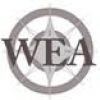SUSTAINABLE DEVELOPMENT AS A DETERMINANT OF FUNCTIONING THE VALUABLE NATURAL AREAS
Vol. 3, No 1a, 2010
SUSTAINABLE DEVELOPMENT AS A DETERMINANT OF FUNCTIONING THE VALUABLE NATURAL AREAS
Anetta Zielińska
Abstract. Development of valuable natural areas is seen through implementing the idea of sustainable development which aim is retaining the harmony between orders: ecological, economical, social, institutional and spatial. It will cause the increase in the level of society’s life quality, the society living within valuable natural areas.
Stimulator for sustainable development is greening economy (e.g. agriculture, tourism), it is a challenge and the paradigm of the present. In result valuable natural areas will become competitive by the fact that they are predestined to implementing into practice the rules of sustainable development. Within valuable natural areas there is a meaningful, developmental potential, they constitute over 32% of the Poland’s land surface.
Keywords: sustainable development, nature valuable areas.
References:
1.Dobrzański G., Rozważania na temat pojęcia obszarów przyrodniczo cennych, Maszynopis, Politechnika Białostocka, Białystok 2000.
2.Ekologiczne, medyczne i socjologiczne przesłanki kształtowania obszarów przyrodniczo cennych, red. L.Ryszkowski, PWN, Warszawa-Poznań 1984.
3.Environment 2009, Central Statistical Office, Warsaw 2009.
4.http://www.gdos.gov.pl/natura-2000/natura-2000-w-polsce/statystyki-i-stan-wprowadzania.html [the date of downloading 15.05.2010r.]
5.Makomaska-Juchniewicz M., Tworek S., The Place of Natura 2000 Network in European wildlife conservation, [in:] Ecological Network Natura 2000. Problem or chance, The Institute for Wildlife Conservation PAN, Krakow 2003.
6.Solon J., Ocena zrównoważonego krajobrazu – w poszukiwaniu nowych wskaźników, [w:] (red.) M. Kisotowski, Studia ekologiczno-krajobrazowe w programowaniu rozwoju równoważonego przegląd polskich doświadczeń u progu integracji z Unią Europejską, Problemy Ekologii Krajobrazu – tom XIII, Uniwersytet Gdański, Gdańsk 2004.
7.Stawicka J., Ochrona różnorodności biologicznej, [w:] (red.) Hewelke P., Zasoby przyrodnicze szansą zrównoważonego rozwoju, Wydawnictwo Szkoły Głównej Gospodarstwa Wiejskiego, Warszawa 2007.
8.Strategia Zrównoważonego Rozwoju Polski do 2025 roku, Ministerstwo Środowiska, Warszawa grudzień 1999.
9.Ustawa o ochronie przyrody z dnia 16 kwietnia 2004 roku (a homogenous tekst: Dz.U. z 2009 r. nr 151, poz. 1220)
10.Ustawa Prawo ochrony środowiska z 27 kwietnia 2001 r. (a homogenous tekst: Dz.U. z 2008 r. nr 25, poz. 150).
11.Wilson E., Diversity of Life, W.W. Morton and Co., New York, London 1992.
12.Zielińska A., Competitiveness of valuable natural areas, [in:] (reg.) T. Bernat, Industry and state – selected competitiveness problems, Microeconomics Department, University of Szczecin, Young Scientist Conference, VII International Conference INYRSS Labour Market and Competitiveness, Szczecin 2007.
13.Zielińska A., Terminologia obszarów przyrodniczo cennych w naukach prawnych i ekonomicznych, [w:] (red.) T. Borys, B. Fiedor, Gospodarka a środowisko, Wydawnictwo Uniwersytetu Ekonomicznego we Wrocławiu, Prace Naukowe, in the process of printing.
PhD Anetta Zielińska
University of Economics in Wroclaw
Faculty of Regional Economy and Tourism in Jelelnia Góra












